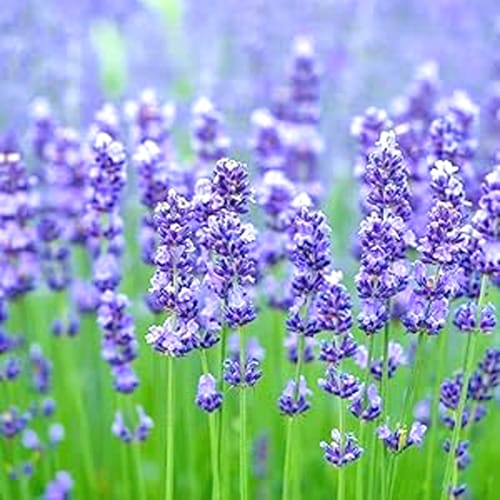Purple flowers revolution in J&K

Mohammad Hanief
Jammu and Kashmir is blessed with a unique climate perfect for lavender farming as it has been traditionally known for its saffron production worldwide. However, with the introduction of the Aroma Mission in 2016, there has been a shift toward lavender farming. Lavender farming requires very little investment, and the returns are pretty high. One can quickly start with a small piece of land and a few plants. Lavender cultivation, which was introduced as an experiment to help farmers switch to more profitable crops, is now showing revolutionary results.
These initiatives, along with the enthusiasm of farmers, have fueled lavender plantings a growth coined the “Purple Revolution.” There are currently over 200 acres of land devoted to Lavender cultivation in the region, which is projected to double by the end of the year.
Lavender cultivation is practiced in almost all twenty districts in Jammu and Kashmir, while Kashmir has recently taken over this prestigious crop, Particular districts that have made substantial progress in this area include Kathua, Udhampur, Doda, Ramban, Kishtwar, Rajouri, Srinagar, Pulwama, Kupwara, Bandipora, Budgam, Ganderbal, Anantnag, Kulgam and Baramulla.

Farmers in Jammu and Kashmir traditionally grew grains such as corn, rice and millet, which did not provide much profit, but with the cultivation of lavender, their profits have multiplied several times.Lavender cultivation has emerged as a profitable and sustainable alternative for the farmers in Kashmir, enabling them to improve their economic prospects and enhance their livelihoods with fewer agricultural inputs.
The lavender farming is seen as more profitable as compared to the traditional crops and the agriculture department has been conducting awareness campaigns for farmers to inform them about the profitability of this plant. Besides, free-of-cost lavender plants were distributed among the farmers interested in lavender farming by the agriculture department. They were also apprised about the know-how of the crop and its yield.
Lavender farming in Jammu and Kashmir is an excellent way to earn profits whileenjoying the stunning views of the snow-capped mountains. The state has beenpromoting lavender cultivation under the Aroma Mission, and the results have been veryencouraging. Lavender farming requires very little investment, and the returns are prettyhigh. One can quickly start with a small piece of land and a few plants.
The climate in Jammu and Kashmir is perfect for lavender cultivation, and the flowersgrow very well in this region. The best time to harvest Lavender is from June to August.The flowers are dried and used to make essential oils, highly prized in the perfumeindustry. Lavender oil has many therapeutic properties and is used in aromatherapy.
People usually associate lavender with two specific traits: its fragrance and its color. But you may not know that the lavender flower and the oil derived from it have long histories in herbal medicine.
The word lavender comes from the Latin root “lavare,” which literally means “to wash.” The earliest recorded use of lavender dates back to ancient Egypt. There, lavender oil played a role in the mummification process.During later times, lavender became a bath additive in several regions, including ancient Persia, Greece, and Rome. These cultures believed that lavender helped purify the body and mind.
Lavenders are small evergreen shrubs with gray-green hoary linear leaves. The purple flowers are sparsely arranged on spikes at the tips of long bare stalks and produce small nutlet fruits. The fragrance of the plant is caused by shining oil glands imbedded among tiny star-shaped trichomes (plant hairs) that cover the flowers, leaves, and stems. The plants in cultivation do not usually produce seed, and propagation is accomplished by cuttings or by dividing the roots.
Lavender oil, or lavender flower oil, is obtained by distillation of the flowers and is used chiefly in fine perfumes and cosmetics. It is a colourless or yellow liquid, the fragrant constituents of which are linalyl acetate, linalool, pinene, limonene, geraniol, and cineole. Lavender water, a solution of the essential oil in alcohol with other added scents, is used in a variety of toilette preparations.
The ‘Aroma Mission’ or ‘Purple Revolution,’ initiated by the central government in 2016 through the Council of Scientific and Industrial Research’s (CSIR) Aroma Mission, has played a transformative role in the lives of farmers in Jammu and Kashmir. The mission aims to support the domestic aromatic crop-based agro-economy by shifting from imported aromatic oils to locally grown varieties.
Thousands of Jammu and Kashmir farmers are switching to lavender cultivation, which has been very profitable for them. According to the statistics, 5,000 entrepreneurs/farmers are growing lavender on more than 200 acres of land, which has led to a 4-5 times increase in their economy.
The agro-climatic conditions of Kashmir provide the perfect environment for lavender cultivation, as it thrives in mild summers, bright sunshine, and even marginal soils. As land holdings and natural resources are shrinking, lavender cultivation requires fewer inputs, less irrigation, and can thrive in stress conditions, making it a promising future crop.
In addition to the economic benefits, lavender cultivation has also created livelihood opportunities for local women. With rising demand due to its medicinal values and the prospect of better returns, growing lavender has become a preferred choice for many farmers in the area, which is considered as the most fertile belt in Kashmir.
Lavender is a signature crop which is a buzz word today because of its varied uses in the industry, which includes cosmetics, toiletries, fragrances, therapeutics, etc, as the weather of Jammu and Kashmir is conducive for the crop.Also, the lavender plant is antimicrobial, anti-fungal and anti-bacterial and even anxiolytic, and these inherent characteristics help farmers save cost.
Today, lavender is more than just a fragrant plant. As it turns out, this herb is also commonly used for medicinal and therapeutic benefits. Everyday stresses can take a toll on your mental health. The greater your anxiety level, the higher the risk for headaches, depression, and low energy.
Aromatic crop startups can be encouraged under initiatives like ‘Startup India’ through government incentives and incubation support.Additionally, large-scale campaigns are vital to raise awareness among farmers on the immense benefits of adopting lavender and other aromatic crops over traditional options. This multifaceted approach can ensure the aromatic farming mission brings transformative and inclusive rural development in the future.
